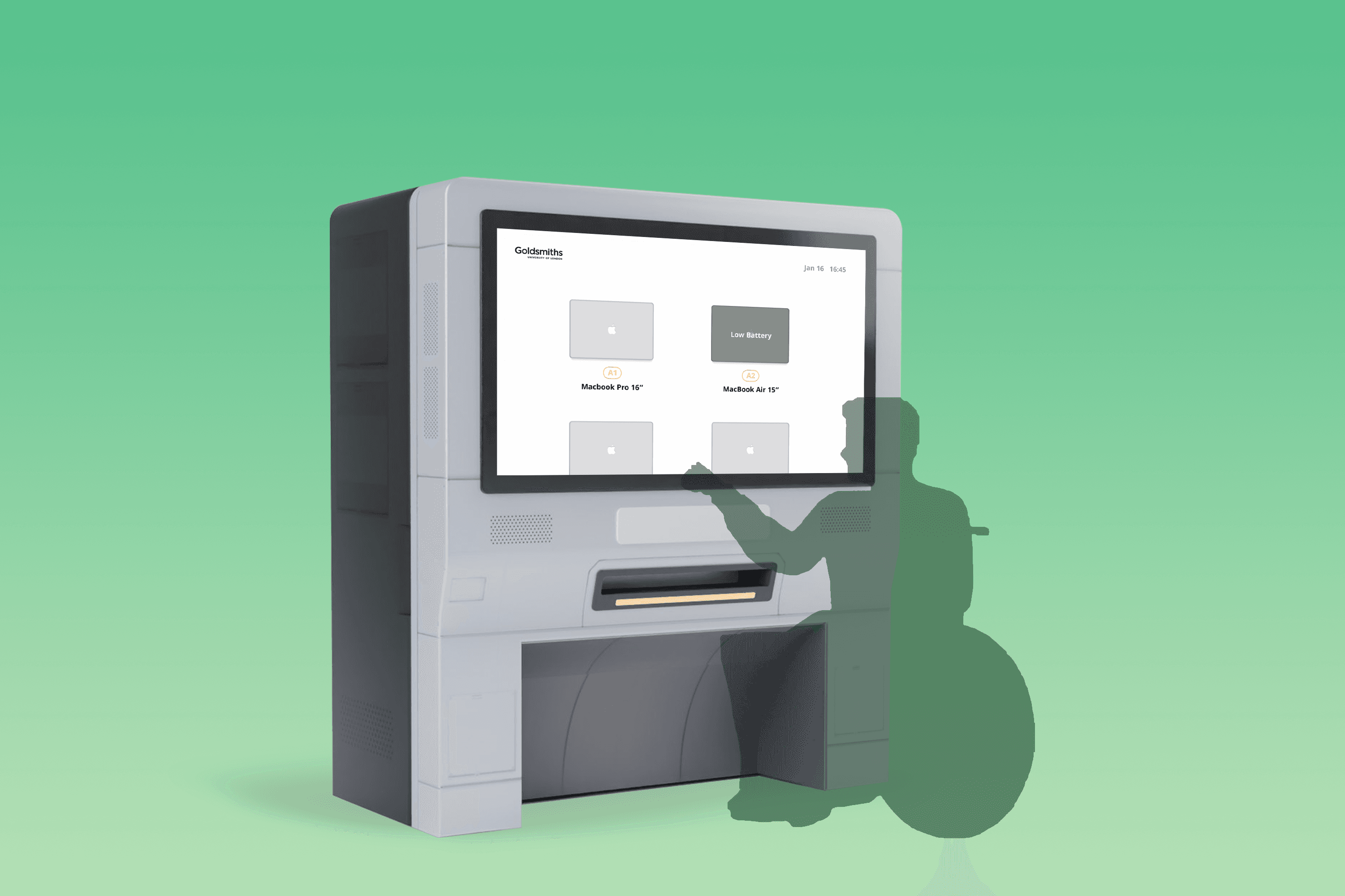Overview
Redesigning the Goldsmiths Library Laptop Loan Machine provided valuable insights into UX issues, emphasizing the user's perspective to develop practical, user-centered design solutions. This process extended beyond service improvement, incorporating inclusive design principles and addressing potential human factor problems users might encounter with Self-Service Technologies (SSTs).
Our team employed empathetic and user-centered design strategies tailored to SSTs, integrating their capabilities with diverse user needs. By focusing on enhancing and simplifying interactions, we aimed to create solutions that are functional, intuitive, and universally accessible, ultimately enriching the user experience and increasing the machine's utilization.

Project Objective
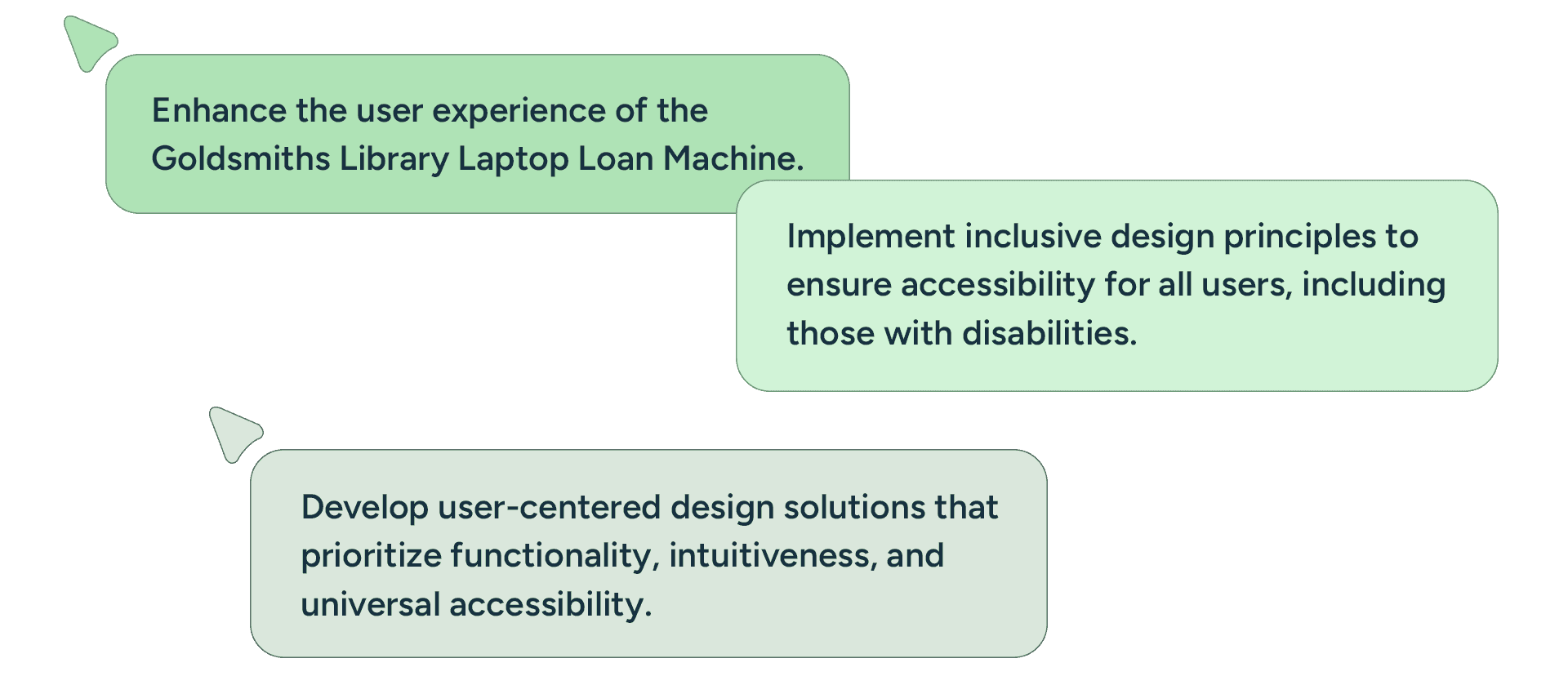
Challenge
Systems-thinking across different use cases that involved considering the end-to-end flow of multiple features and addressing the human factor problems in both interface and hardware.
Designing hardware that adheres to SSTs design principles and the Library's spatial planning, while also taking into account the engineering system and laptop storage space.
Design Process

Background
Focusing on Laptop Loan Machine, Why?
The laptop loan machine is a vital component of the Goldsmiths Library service. We chose it as the focus of our SSTs improvement project due to its underutilization despite a diverse user base.
Our goal is to enhance and simplify user interactions, addressing the human factors that influence technology usage. Through our research, we've developed solutions to make the machine more accessible and engaging for all users.




So, what exactly is the problem?
Based on user journey and interview results, we identified two main reasons why users refuse to use the laptop loan machine: poor hardware design and an unintuitive interface.
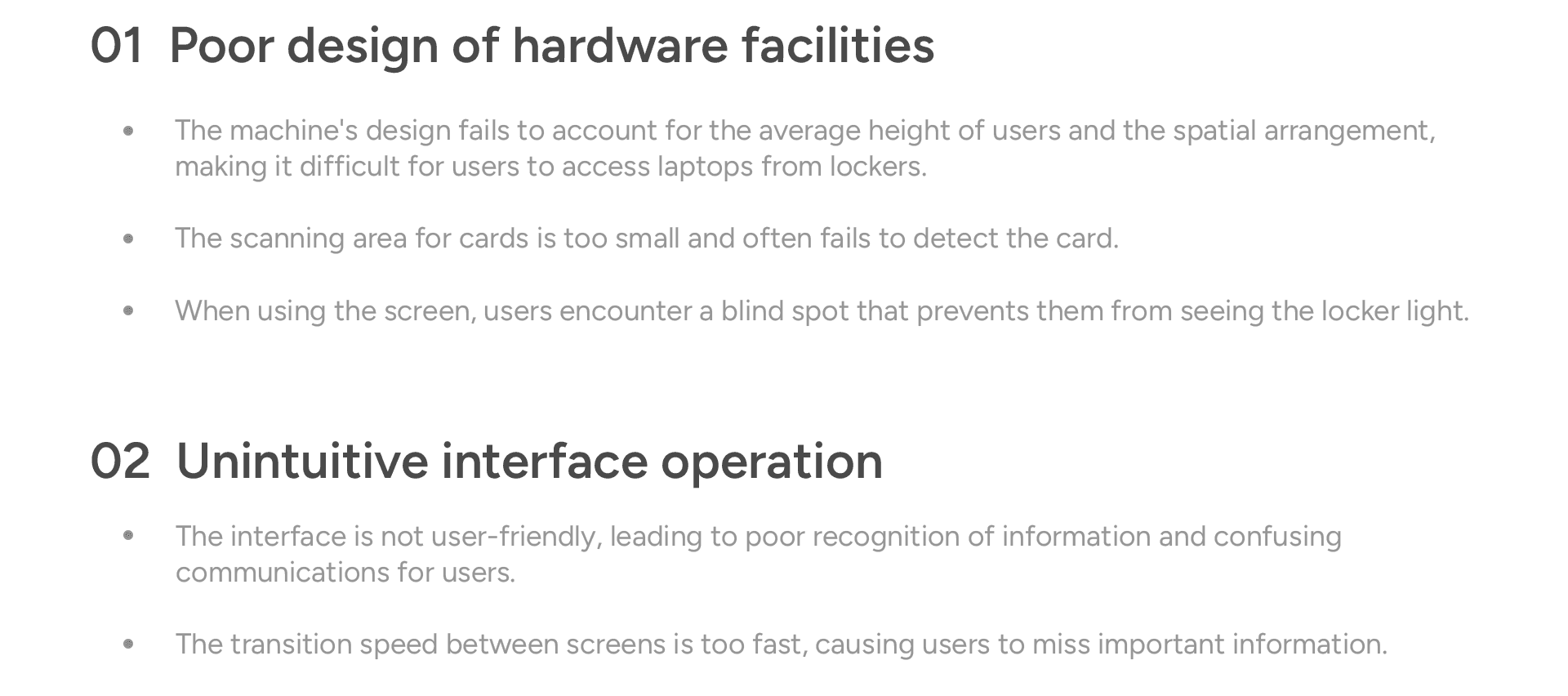

Design Principles

Ideation +
Concept Development
After our initial ideation phase, we focused on two hardware design concepts, evaluating their pros and cons, and also redesign the interface to be more intuitive. We decided to advance the vending machine concept to improve accessibility, setting it as our design benchmark. As the UX Team Lead, I reviewed and synthesized the various proposals from the team, ultimately selecting the design that best met our objectives.
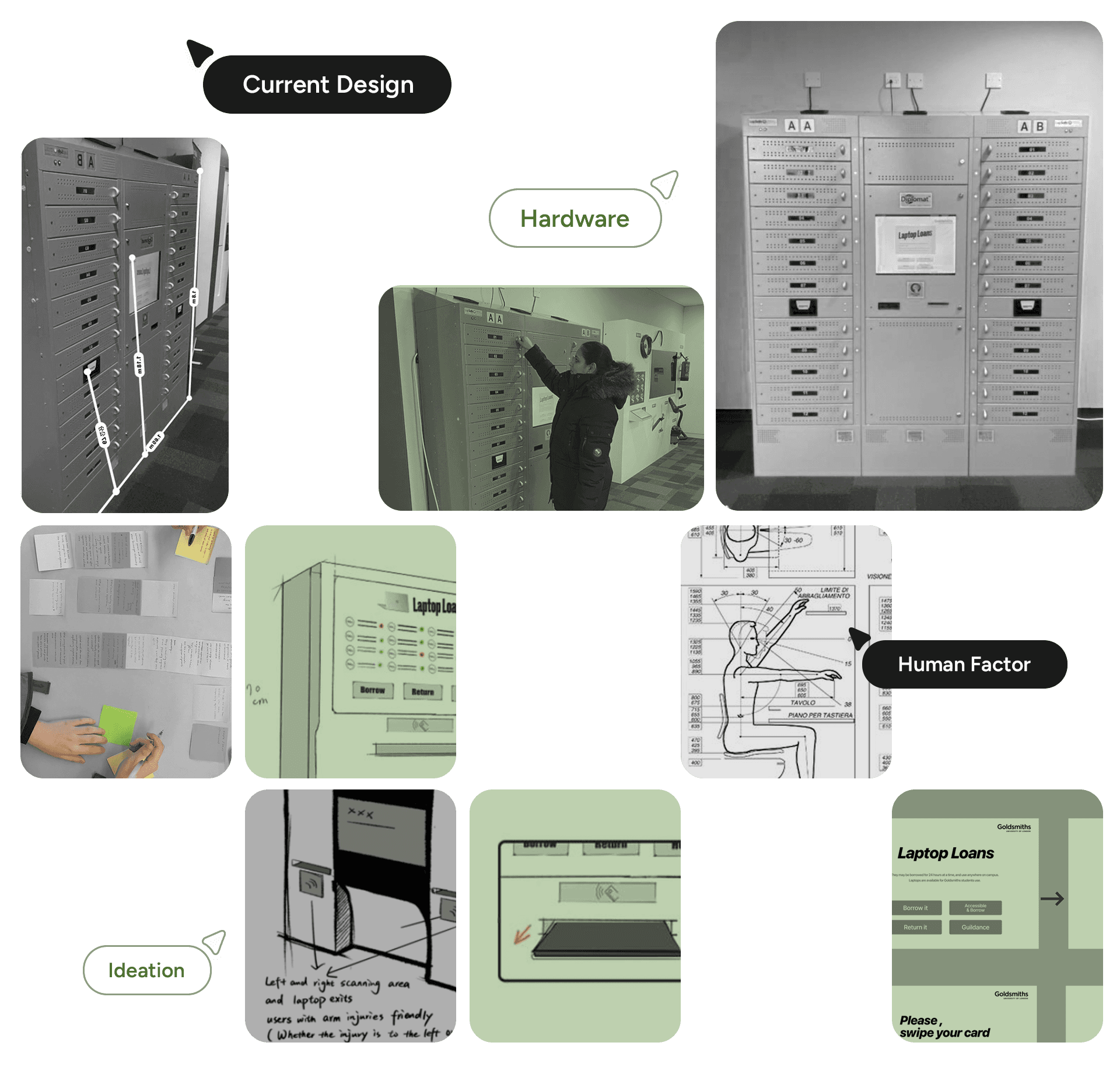
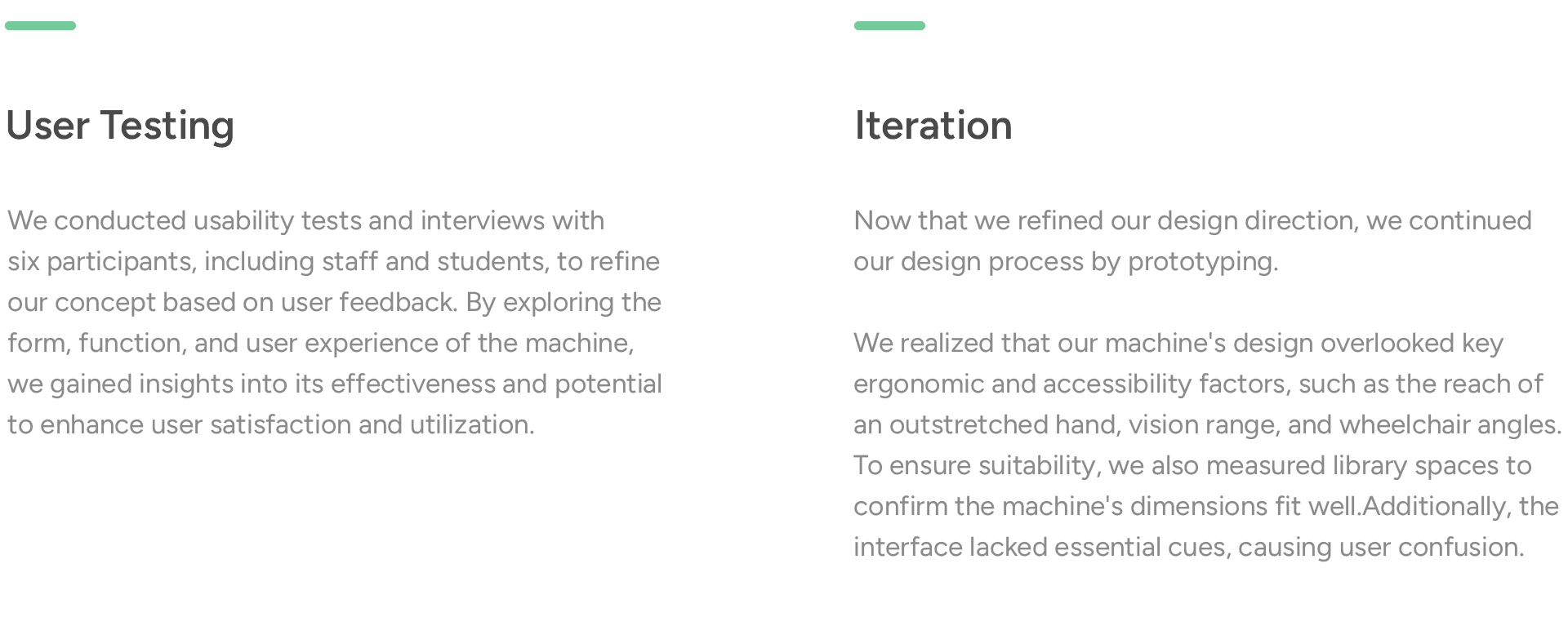
Outcome
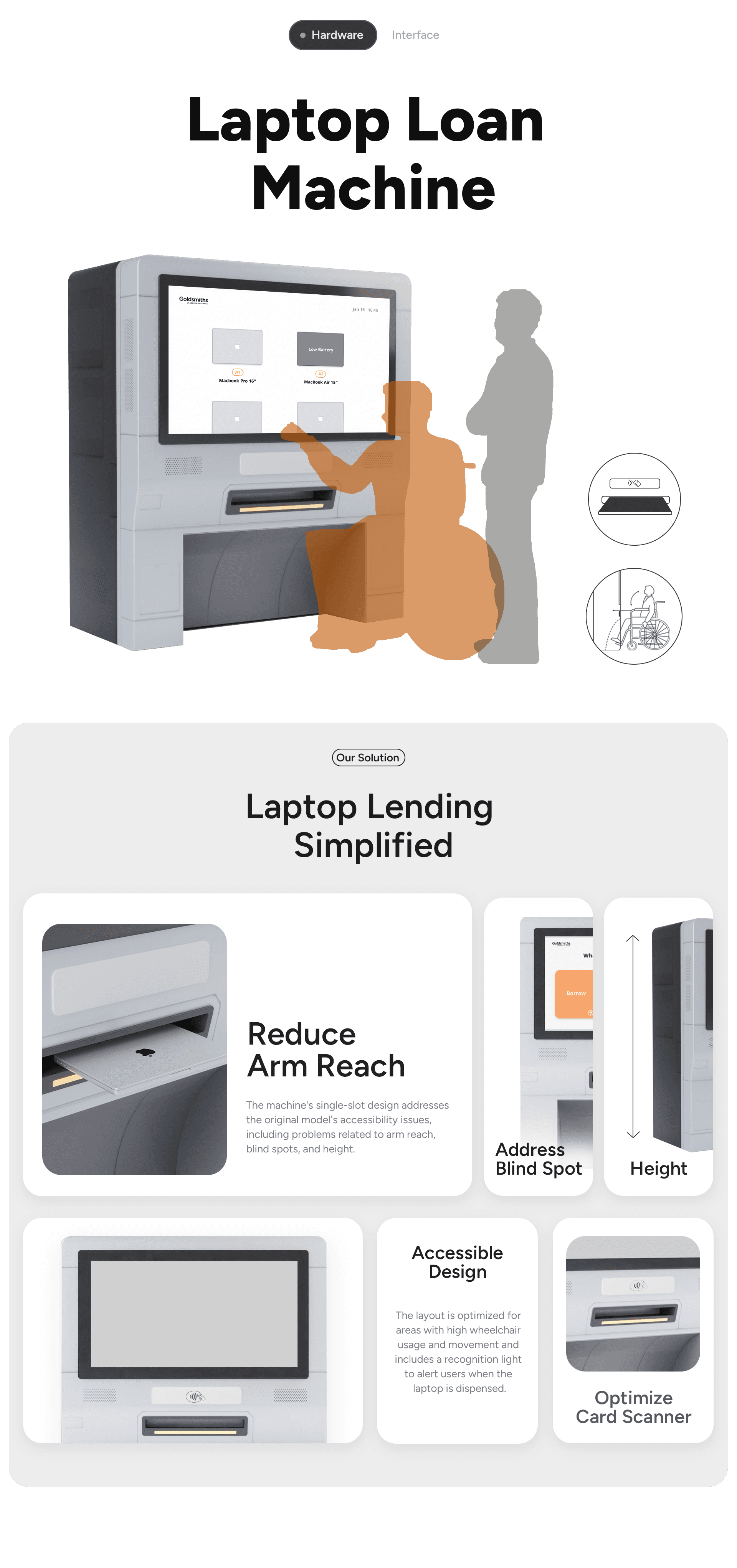
Interface

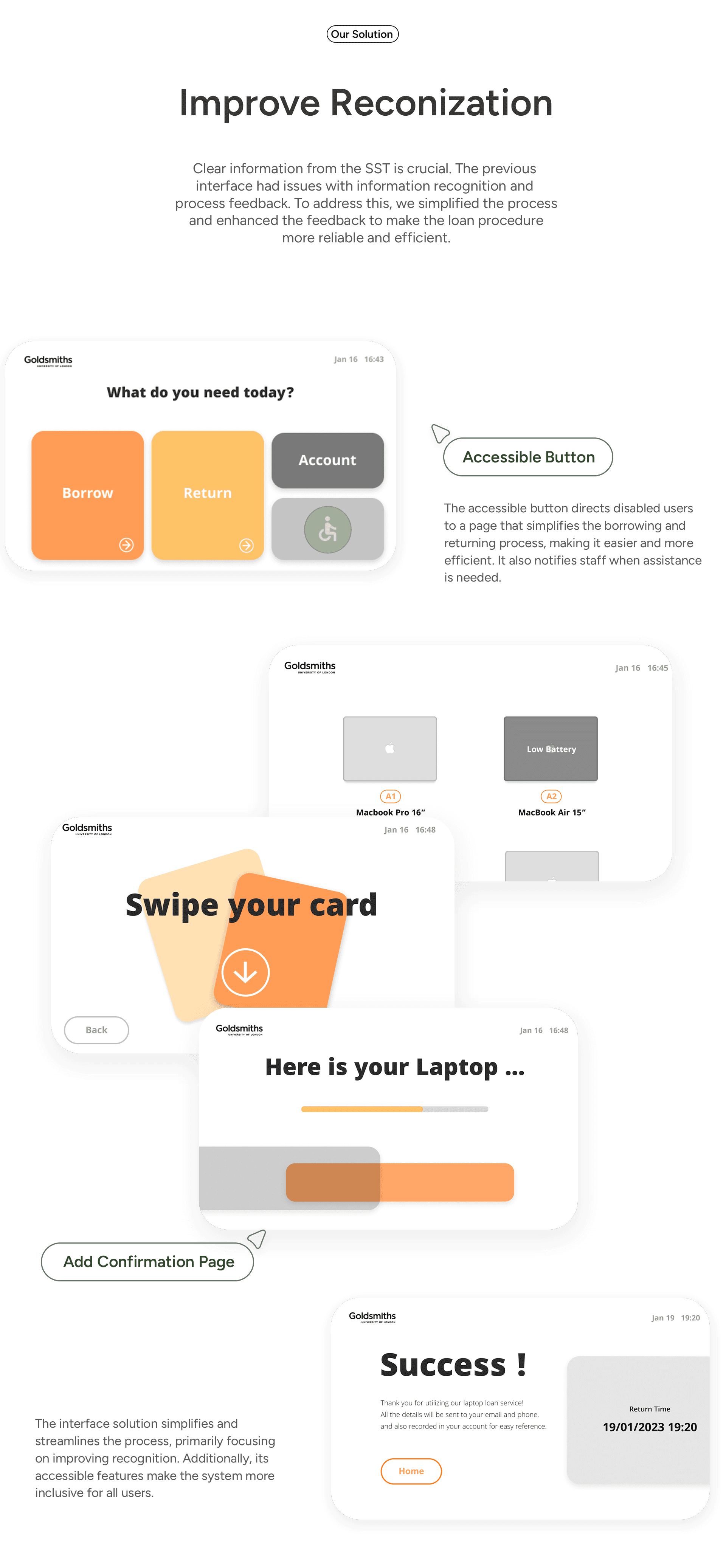
Learnings
Leading this research project as a Team Leader was a transformative experience that enhanced my leadership, communication, and critical thinking skills. It deepened my understanding of how human factors influence machine design, shaping my approach to future projects with a strong emphasis on user-centered design principles.
Areas for improvement in this project include:
Prototype Testing: If additional resources were available, I would build a prototype to conduct extensive testing with users, ensuring the design meets their needs and integrates well into library settings.
Broader Stakeholder Consideration: I learned the importance of considering the perspectives of various stakeholders, including laptop rental companies and educational institutions, to develop a more universally beneficial design.
